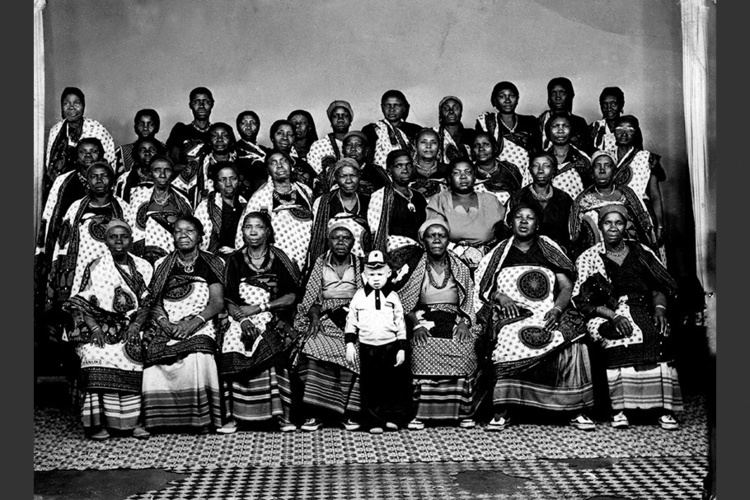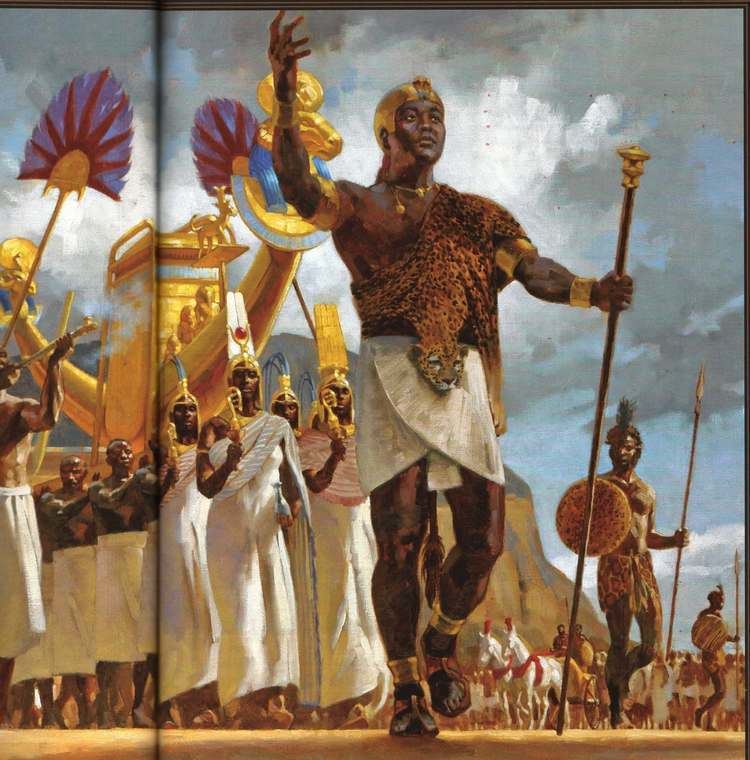 | ||
Kenya s nubians strive for recognition
Nubians are an ethnic group that originated in present-day Sudan and Egypt. Today, people of Nubian descent primarily live in Sudan, and inhabit the region between Wadi Halfa in the north and Al Dabbah in the south. A significant number of Nubians, estimated at 100,000, live in Kenya. The main Nubian groups from north to south are the Halfaweyen, Sikut, Mahas, and Dongola. They speak a variety of Nilo-Saharan languages in the Nubian language family.
Contents
- Kenya s nubians strive for recognition
- History
- Modern Nubians
- Culture
- Religion
- Architecture
- Racist incidents
- Prominent Nubians
- References

Nubian people have a long history dating back to dynastic Egypt. Nubians founded a dynasty that ruled upper and lower Egypt during the 8th century BCE. Ancient Nubians were famous for their skill and precision with the bow.

History

The Nubian people historically inhabited the region south of Egypt, known today as Sudan, where they settled mainly along the banks of the Nile. They were noted for their horsemanship, riding their horses bareback. They were light, mobile and efficient this way, and became valued for cavalry duties in later years.
They speak Nubian language, an Eastern Sudanic language that is part of the Nilo-Saharan phylum.

The Old Nubian language is attested from the 8th century, and is the oldest recorded language of Africa outside of the Afro-Asiatic group. It was the language of the Noba nomads who occupied the Nile between the First and Third Cataracts and also of the Makorae nomads who occupied the land between the Third and Fourth Cataracts, following the collapse of the Kingdom of Kush sometime in the 4th century AD. The Makorae were a separate tribe who eventually conquered or inherited the lands of the Noba: they established a Byzantine-influenced state called the Kingdom of Makuria, which administered the Noba lands separately as the eparchy of Nobadia. Nobadia was converted to Miaphysitism by the Orthodox priest Julian and Bishop Longinus of Constantinople, and thereafter received its bishops from the Pope of Alexandria.

The name "Nubia" or "Nubian" has a contested origin. It may originate with an ancient Egyptian noun, nebu, meaning gold. Another etymology claims that it originates with the name of a distinct group of people, the Noubai, living in the area that would become known as Nubia. Scholars may also refer to Nubians as Kushites, a reference to the Kush, the territory of the Nubians as it was called by Ancient Egyptians. It may originate with the Greek historian Strabo, who referred to the Nubas people.
The earliest history of ancient Nubia comes from the Paleolithic Era of 300,000 years ago. By around 6000 BCE, the Nubians had developed an agricultural economy and had contact with Egypt. The Nubians began using a system of writing relatively late in their history, when they adopted the Egyptian system. Ancient Nubian history is categorized according to the following periods:
Nubia consisted of four regions with varied agriculture and landscapes. The Nile river and its valley lay in the north and central parts of Nubia, allowing farming using irrigation. The western Sudan had a mixture of peasant agriculture and nomadism. Eastern Sudan had primarily nomadism, with a few areas of irrigation and agriculture. Finally, there was the fertile pastoral region of the south, where Nubia's larger agricultural communities were located.
Nubia was dominated by kings from clans that controlled the gold mines. Trade in exotic goods from other parts of Africa—ivory, animal skins—passed to Egypt through Nubia.
Modern Nubians
The descendants of the ancient Nubians still inhabit the general area of what was ancient Nubia. Today, they live in what is called the former Old Nubia, which is mainly in modern Egypt. Nubians have been resettled in large numbers (an estimated 50,000 people) away from southern Egypt since the 1960s, when the Aswan High Dam was built on the Nile, flooding ancestral lands. Some resettled Nubians continue working as farmers (sharecroppers) on resettlement farms whose landowners live elsewhere; most work in Egypt's cities. Whereas Arabic was once only learned by Nubian men who travelled for work, it is increasingly being learned by Nubian women who have access to school, radio and television. Nubian women are working outside the home in increasing numbers.
In the 1973 Arab–Israeli War Egypt employed Nubian people as codetalkers.
Culture
Nubians have developed a common identity which has been celebrated in poetry, novels, music and storytelling.
Nubians in modern Sudan include the Danaqla around Dongola Reach, the Mahas from the Third Cataract to Wadi Halfa, and the Sikurta around Aswan. These Nubians write using their own script. They also practice scarification: Mahas men and women have three scars on each cheek, while the Danaqla wear these scars on their temples. Younger generations appear to be abandoning this custom.
Nubia's ancient cultural development was influenced by its geography. It is sometimes divided into Upper Nubia and Lower Nubia. Upper Nubia was where the ancient Kingdom of Napata (the Kush) was located. Lower Nubia has been called "the corridor to Africa", where there was contact and cultural exchange between Nubians, Egyptians, Greeks, Assyrians, Romans, and Arabs. Lower Nubia was also where the Kingdom of Meroe flourished. The languages spoken by modern Nubians are based on ancient Sudanic dialects. From north to south, they are: Kenuz, Fadicha (Matoki), Sukkot, Mahas, Danagla.
Kerma, Nepata and Meroe were Nubia's largest population centres. The rich agricultural lands of Nubia supported these cities. Ancient Egyptian rulers sought control of Nubia's wealth, including gold and the important trade routes within its territories. Nubia's trade links with Egypt led to Egypt's domination over Nubia during the New Kingdom period. The emergence of the Kingdom of Meroe in the 8th century BCE led to Egypt being under the control of Nubian rulers for a century, although they preserved many Egyptian cultural traditions. Nubian kings were considered pious scholars and patrons of the arts, copying ancient Egyptian texts and even restoring some Egyptian cultural practices. After this, Egypt's influence declined greatly. Meroe became the centre of power for Nubia and cultural links with sub-Saharan Africa gained greater influence.
Religion
Today, Nubians practice Islam. To a degree, Nubian religious practices involve a syncretism of Islam and traditional folk beliefs. In ancient times, Nubians practiced a mixture of traditional religion and Egyptian religion. Before the spread of Islam, many Nubians were adherents of Christianity.
Ancient Nepata was an important religious centre in Nubia. It was the location of Gebel Barkal, a massive sandstone hill resembling a rearing cobra in the eyes of the ancient inhabitants. Egyptian priests declared it to be the home of the ancient deity Amun, further enhancing Nepata as an ancient religious site. This was the case for both Egyptians and Nubians. Egyptian and Nubian deities alike were worshipped in Nubia for 2500 years, even while Nubia was under the control of the New Kingdom of Egypt. Nubian kings and queens were buried near Gebel Barkal, in pyramids as the Egyptian pharaohs were. Nubian pyramids were built at Gebel Barkal, at Nuri (across the Nile from Gebel Barkal), at El Kerru, and at Merroe, south of Gebel Barkal.
Architecture
Modern Nubian architecture in Sudan is distinctive, and typically features a large courtyard surrounded by a high wall. A large, ornately decorated gate, preferably facing the Nile, dominates the property. Brightly colored stucco is often decorated with symbols connected with the family inside, or popular motifs such as geometric patterns, palm trees, or the evil eye that wards away bad luck.
Nubians invented the Nubian vault, a type of curved surface forming a vaulted structure.
Racist incidents
Lebanese singer Haifa Wehbe released an album containing lyrics calling Nubian black people in Egypt "monkeys". Outraged Egyptian Nubians filed a lawsuit and claimed that it inspired an increase in racism against Nubians in public, including schools.
Anwar Sadat, third President of Egypt, faced insults of not looking "Egyptian enough" and "Nasser's black poodle."
